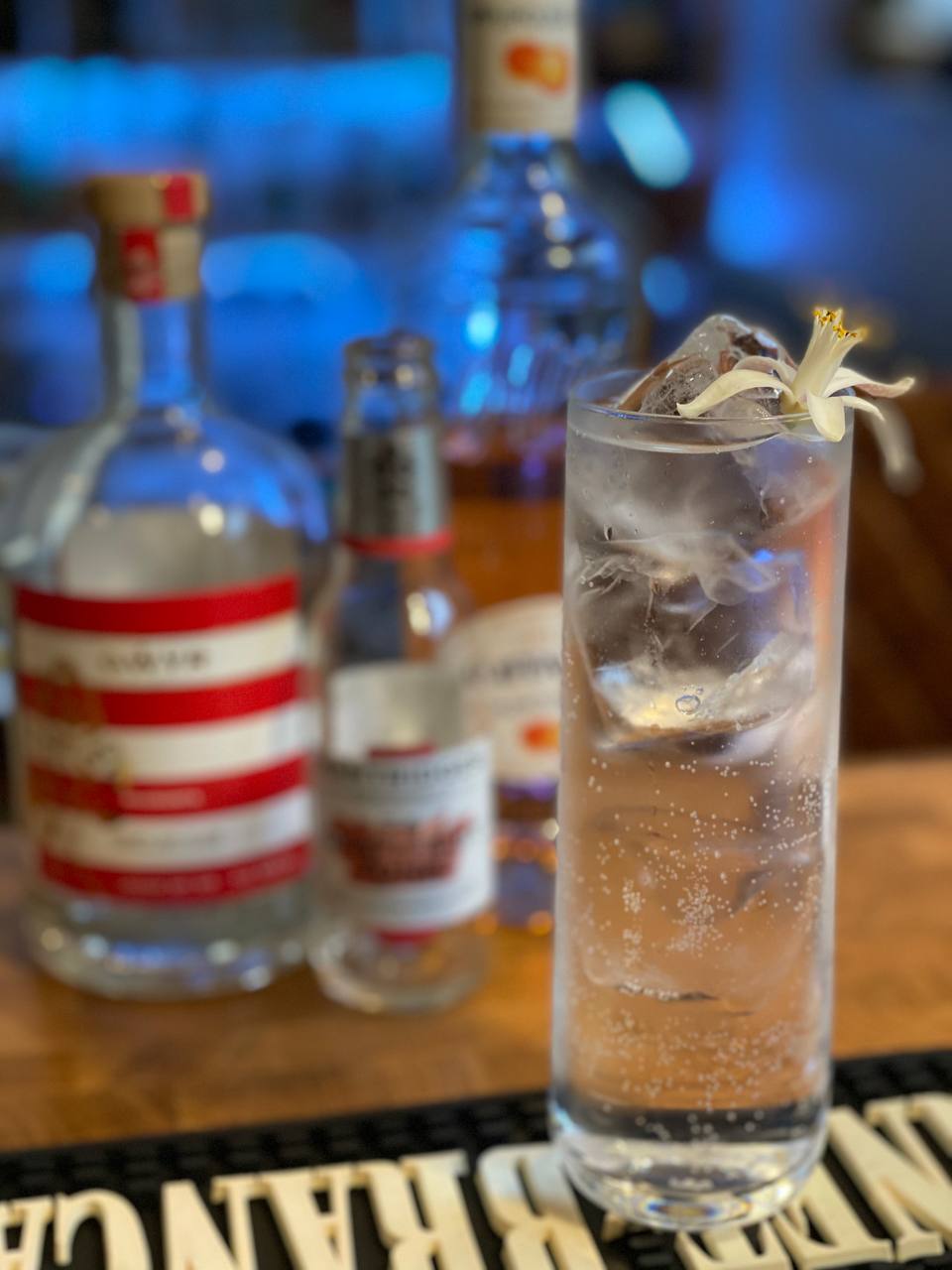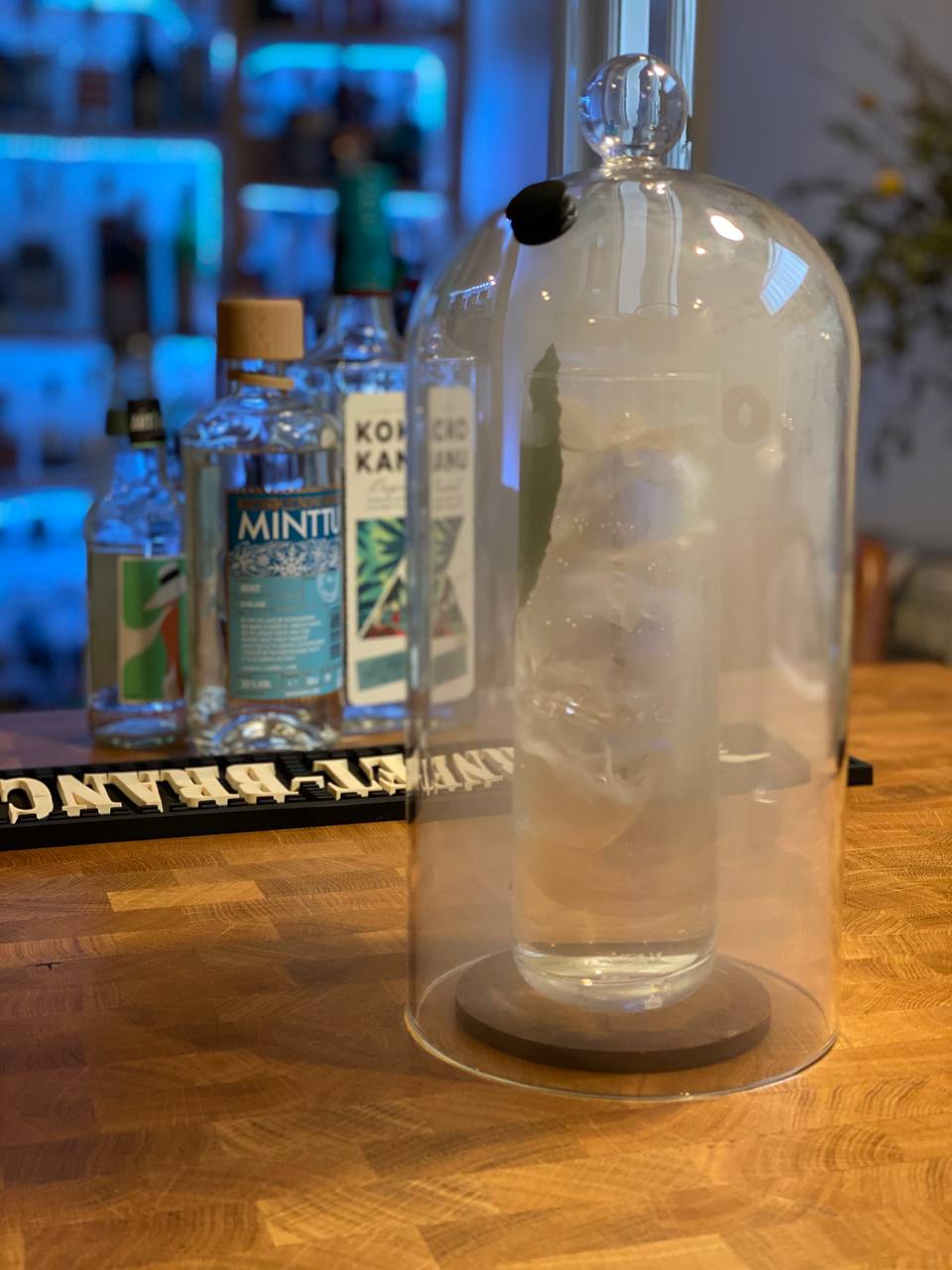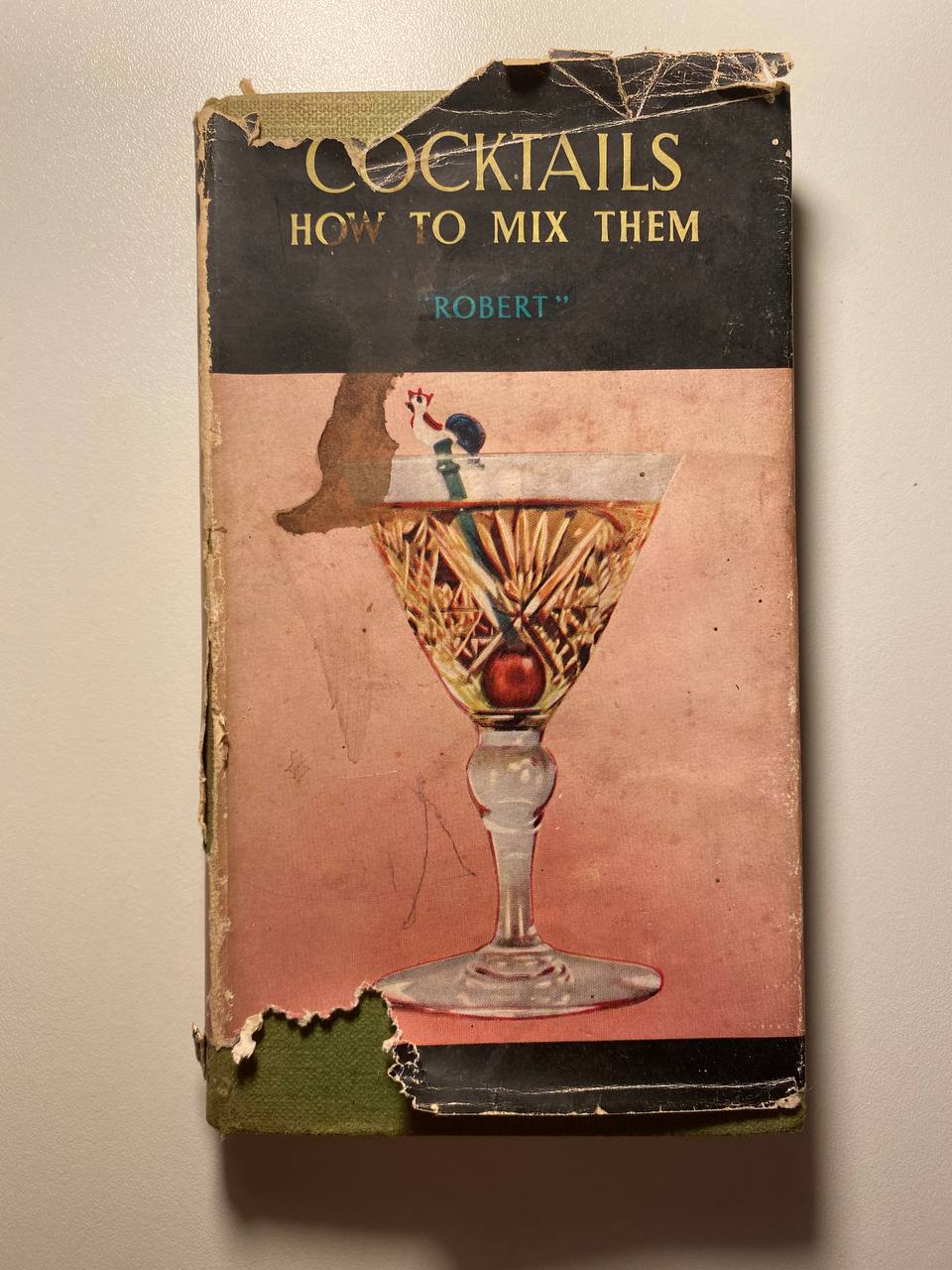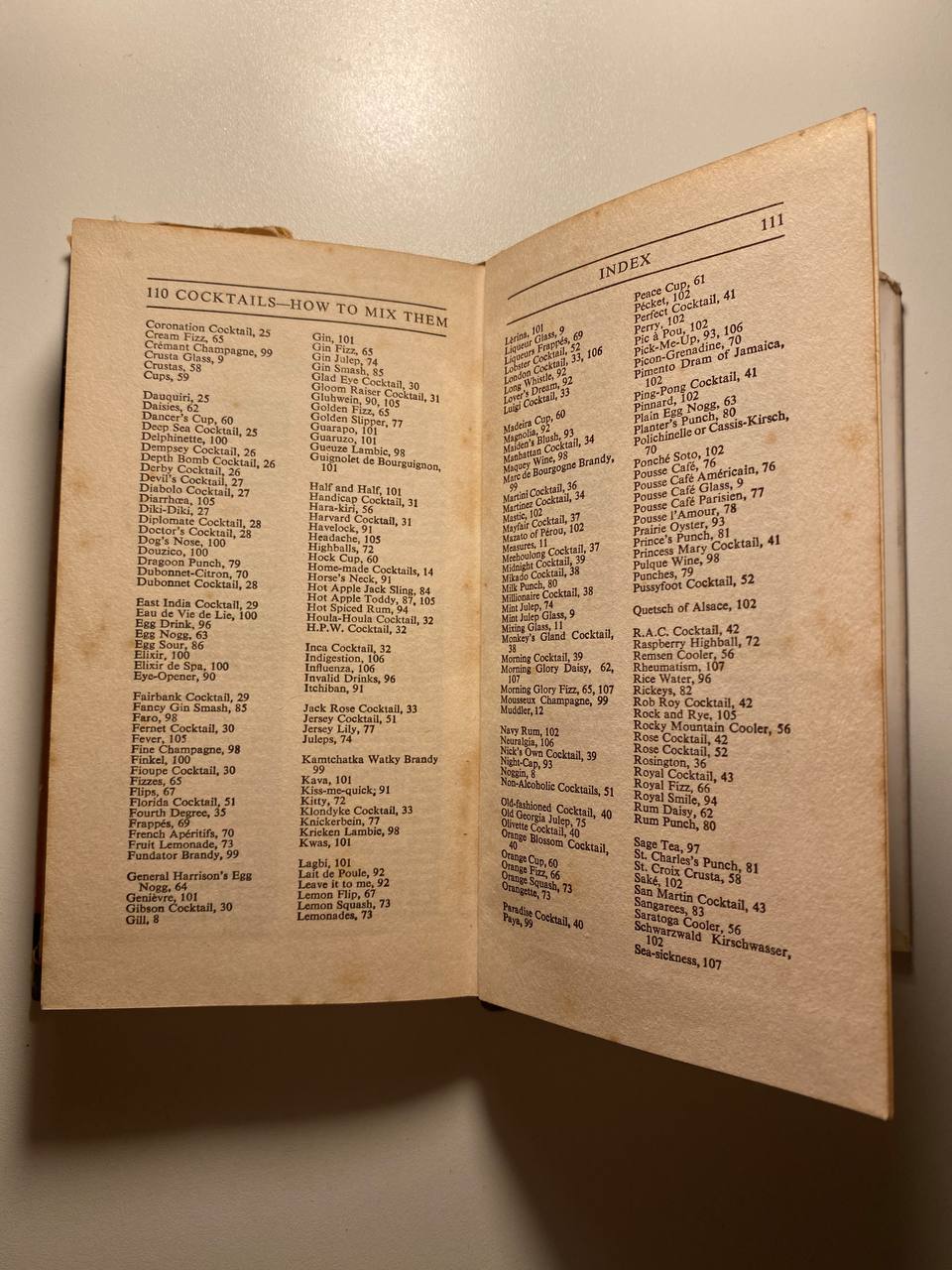Tuesday Triage #36
- TUESDAY TRIAGE #36 by Vadim Drobinin
- On upcoming Spring
- Things I enjoyed reading
- 1. Teaching by @akosma
- 2. Is it farewell to the handshake? by Stephen Bayley
- 3. Living Like It's 99 by Gregory Alvarez
- 4. Balancing technological sugars in ganaches by Erik Van der Veken
- 5. The Haunted Imagination of Alfred Hitchcock by John Banville
- 6. The Voiello Marille by @simanaitis
- 7. Desperately Seeking a New York Bagel in London by Seanan Forbes
- 8. A Brief History of the Hedge Fund by Frederick Kaufman
- 9. The Savor of Memory by Laleh Khalili
- 10. Do-It-Yourself Book Press by Hamish MacDonald
- Things I didn't know last Tuesday
- 1. Duke 3D's mirror dimension
- 2. British Biscuit
- 3. Smart Fish Tank Thermometer can be an attack vector
- 4. Thomas Jefferson brought Mac'n'Cheese to the States
- 5. Charing Cross origins
- 6. Hosepipe ban
- 7. Casting for The Notebook, 2004
- 8. Letterlocking
- 9. Making honey without bees
- 10. World’s “bluest” sky
- Book of the week
- Thank you and see you in a week!
TUESDAY TRIAGE #36
by Vadim Drobinin ¶
Your weekly crème de la crème of the Internet is here!
23.03.2021 (read in browser)
On upcoming Spring ¶
The weather on the island gets sunnier and sunnier, which is definitely not something I've been expecting upon moving to the UK a few years ago.
For me it's a funky time of searching for cocktail inspiration: as everything blooms and blossoms, anything can be a garnish if you are brave enough.
Last time I mentioned flowers from our lemon tree used in a Martinez, so this week it was more of building flavours around it.
One of the most successful combinations so far is a mix of all things grapefruits – from a tonic to a liquor – with some Welsh gin. The latter is unusually sweet for a not-so-contemporary attempt at the London dry style, so the overall drink is on the sweeter side too, but it just screams "Spring".

Another garnish I really enjoy is smoke.
It changes the perception a lot, and adds a really nice presentation, so coating something in clouds of apple wood or hickory is a really nice trick, as good as shaking a whiskey sour in the shaker filled with smoke.
However, this time I went for a more mystic source of wood, namely, the Palo Santo (Spanish for "Holy Wood").
It's widely used for ritual purification and occasionally as a folk medicine, but technically it's poisonous, so to incorporate one in a drink I either need to distil it with a spirit (which is illegal in the UK without a proper license), or use it to produce smoke.
I paired it with coconut rum, mint liqueur, lime tonic, and while I can't quarantee its holyness, it tasted absolutely heavenly – like a refreshing twist on pina colada. A proper Spring evening long-drink to sip while pizza is getting ready in a wooden oven:

Next time I will probably look into semi-transparent drinks, so sounds like lots of milk punches and homemade dry vermouths.
Things I enjoyed reading ¶
1. Teaching by @akosma ¶
I might be biased as seems like the author of the post and I have been learning from the same people, but this is a great selection of both advice and reasons to share the knowledge one gains over years:
Coaching a younger developer should be mandatory for all of us; it makes coachees wiser, and it keeps coaches younger at heart.
I was lucky to start mentoring almost a decade ago, and spent three years teaching young folks the mental models of industrial programming, and then moved onto supervising people within mobile teams, and then had a privelege to build from scratch and teach an onsight mobile development course at a university, but all-in-all it was always a mutual growth.
It's pretty much impossible to teach and not learn something new, even if for years and years you talk about the same thing.
2. Is it farewell to the handshake? by Stephen Bayley ¶
I never liked handshakes.
Those coming from the same cultural background I had probably understand that feeling.
Back then I would come to an office in the morning, come to every single man in the room and shake their hand.
Then, some time later, someone else would come and they will do the same.
A few hours later someone will go home, and they will do that again, but this time to say their farewell.
I don't think I will ever miss that.
Culturally speaking, the handshake exists somewhere between etiquette and germ-management. It is one of the only tactile gestures available to us which invites intimacy without also suggesting predatory erotic interest. And devotees learn to enjoy the refinements: the handshake combined with the reciprocal forearm clench is one to be reserved only for the most profoundly sincere encounters.
Hopefully handshakes just... don't come back.
3. Living Like It's 99 by Gregory Alvarez ¶
In my time I've read plenty of articles about social media detox, productivity lifehacks, yadda-yadda, and quite a few of them suggest quitting social networks altogether for a week or two, and change the phone's screen into B&W color scheme.
Here is how to go further: ditch most gadgets with Internet connection, overcome phone anxiety by actually calling people, not texting them, and then enjoy your life to its fullest.
Everybody blames social media for the psychological downsides of technology. But having experienced life without it for quite a while now, having used a smartphone and a “dumb phone”, I’ve discovered a big counter intuitive truth, that the real problem is being online: it’s the smartphone fault.
I wonder if I would ever be brave enough for that though.
4. Balancing technological sugars in ganaches by Erik Van der Veken ¶
Here is a geeky one; feel free to skip it unless you too find the magic behind sugars interaction in ganache to be quite fascinating (not only in ganache!).
Sorbitol has a bad rep. For being an ‘E-number’. Let me set the record straight though; sorbitol is a naturally occurring ‘sugar alcohol’ and can be found in grapes, pears and many other fruits! It is true that in excessive amounts, sorbitol can have laxative effects, it would take some severe chocolate-eating however, to get anywhere near the necessary dose for that.
5. The Haunted Imagination of Alfred Hitchcock by John Banville ¶
A really nice attempt to explain how complex was the personality of one of the most influential and widely studied filmmakers in the history of cinema.
To be fair, if fairness it be, one must acknowledge that Hitchcock did not spare himself when it came to comic spectacle. The kindest interpretation of his clowning is to say it was a way of defending himself against the world’s ridicule. He was acutely conscious of his great girth, his great globular head, and three chins. Yet at dinner parties—at dinner parties—he would perform the “breast ballet,” in which he would “whip off his top and gyrate his pectorals for the amusement of his guests.”
6. The Voiello Marille by @simanaitis ¶
This week folks in the food community discuss the success of someone who invented a new pasta shape, essentially a rough twist on oddly shaped buccatini.
I enjoyed way more a different article though, on a less successful attempt at pasta creation:
Alas, Voiello’s marketing of Marille was less than successful. The pasta had a major product introduction in Milan, but this was never followed with wide distribution. Its cooking time, longer than those of conventional shapes, hampered its adoption by the restaurant trade. And, worse yet, there were rumors of its complex contours precluding the uniform al dente perfection of just the right resistance to bite.
If you look up the photos though, that shape looks quite promising and way easier to replicate by hand – sounds like a decent weekend project to me.
7. Desperately Seeking a New York Bagel in London by Seanan Forbes ¶
This post ends with a recipe, but it is not the reason I wanted to share the article for.
The actual reason is in frustration and pain in attempts to find the flavours of the past in some new environment, something rarely achievable unless one is willing to get their hands dirty and start cooking.
Bagels have character. They are resistant. Toasted, they can acquire an air of crisp rebellion. You have to work to get your teeth through that crust, and you’re rewarded with a holey, chewy, satisfying dough. It takes a while to work your way through a good New York bagel. A London beigel? Minutes.
8. A Brief History of the Hedge Fund by Frederick Kaufman ¶
A really funny read on the history of money-making:
The hedged bet was for rooks, and Shakespearean English abounds with hedge wenches, hedge cavaliers, hedge doctors, hedge lawyers, hedge writers, hedge priests, and hedge wine.
I learnt quite a lot from it; also probably realised that I would not like to work in a hedge fund.
9. The Savor of Memory by Laleh Khalili ¶
Cookbooks are an odd genre.
I've heard of people who cook recipes from cookbooks, following them step-by-step.
I am yet to see one though.
To me cookbooks are either a source of inspiration, or a great insight into someone's very private life.
What counts as authentically Iranian or Persian? The more a cookbook claims to be authentic, the more purist it becomes in determining what is considered part of the Iranian canon of cookery. And the more it claims this form of purity, the less it includes the varieties of foods that have been adopted and adapted by Iranians. These foods may have familiar Euro-American names—hamburgers, pizzas, spaghettis—but their flavors are idiosyncratically, peculiarly, deliciously Iranian.
10. Do-It-Yourself Book Press by Hamish MacDonald ¶
And here is the real weekend project for those keen on building something handy from scratch: a DIY book press. I never knew I needed one, but now I definitely do.
Now when people ask me “Are you published?” I don’t get huffy and whinge about “the state of the publishing industry.” I smile and say “Actually, I publish my own work. By hand.”
That way at least cocktail menus made to order could get to the next level.
Things I didn't know last Tuesday ¶
1. Duke 3D's mirror dimension ¶
I spent a huge chunk of my childhood playing Duke Nukem 3D. The rest of my time was carefully divided between Heroes of Might and Magic, and Quake 3.
I still play these games at least a few times a year. That's a story for a different time though.
Apparently the way Duke 3D's engine felt so advance for its time was due to a plenty of workarounds here and there, like this one to create mirrors across the rooms.
because it turns out that the way the engine handles mirrors is by having surfaces tagged as mirrors, and there's an identical copy of the room on the other side, with some Magic to make the sprites work out
Read the whole thread to learn more about other things, like how they built multiple floors, or submarines.
2. British Biscuit ¶
Apparently British biscuits are different from the rest of the world's thanks to the history of preserving them for military purposes and due to that trying to avoid most common sweeteners, like honey, as they would make it easier to accumulate moisture.
Also they got paired with tea pretty much straightaway:
Tea and biscuits were an early pairing for the working classes. A biscuit, as it has always been, is a good source of cheap, reliable fuel. Mid-day tea became common, until it, too, moved later into the afternoon, pushed by the actual meal that became lunch.
3. Smart Fish Tank Thermometer can be an attack vector ¶
I heard of smart fridges and smart vacuum cleaners being common attack vectors among hackers, but using a fish tank thermometer to still some files is definitely way less expected:
"The attackers used that to get a foothold in the network," she said. "They then found the high-roller database and then pulled that back across the network, out the thermostat, and up to the cloud."
4. Thomas Jefferson brought Mac'n'Cheese to the States ¶
One of my favourite American dishes (it's definitely in top-3, somewhere alongside Jell-Os with whipped cream and sweet potato casseroles) was popularised by a president, how cool is that?!
A staple of American cuisine, the creamy combo made its way to the United States courtesy of Thomas Jefferson, who, while visiting France, became enamored of fashionable pasta dishes served there. He brought back noodle recipes and a pasta machine, since this foodstuff was unavailable in the Colonies. As president, he served macaroni and cheese at an 1802 state dinner.
5. Charing Cross origins ¶
Being a non-native speaker, I rarely look up ethymology of toponyms, probably assuming that they come from some common words.
By doing that I risk to miss some interesting bits:
The word Charing, an ancient name for the area, is derived from cierring, the Old English word for a turn, though authorities are divided as to whether the turn was the one in the Thames or the one in the road alongside it. The cross refers to one of the Eleanor Crosses, a series of 12 erected by King Edward I to memorialise the journey the body of his wife took from Harby, Nottinghamshire, where she died, to her final resting place in Westminster Abbey.
And then the cross was pulled down, and eventually replaced but on the wrong side – it's still there.

6. Hosepipe ban ¶
I learnt about this ban from someone, who has heard it in their childhood and for the past twenty years thought it's a permanent ban.
In fact it was only for a few weeks back then.
The provider sometimes states that their customers are not allowed to use a sprinkler or unattended hosepipe for a few days (or longer), but commonly, a total ban is enacted. Bans are usually in England and South Wales, rarely in Scotland because of the damper climate.
7. Casting for The Notebook, 2004 ¶
Here is a fascinating lesson about honesty:
Cassavetes wanted someone unknown and "not handsome" to portray Noah; he therefore cast Ryan Gosling in the role.
Well, fair enough.
8. Letterlocking ¶
Here is a fascinating technique to secure a letter.
Letterlocking is the act of folding and securing a written message which could be on papyrus, parchment, or paper, so that it does not require an envelope or additional enclosure.

9. Making honey without bees ¶
I spent the last half an hour looking up prices for squirell meat so hardly can side with vegans in their endeavours, but the technique used here is so good:
"The way it works is that you can use yeast in the way that we use yeast for beer brewing - but we tweak the yeast so that instead of producing beer, it produces what we want it to produce," says Jevan Nagarajah, co-founder and chief executive.
So eggs without chickens and milk without cows – finally I can tweak on-demand cocktails to the stage where there is no need in the fridge (only a freezer for ice).
10. World’s “bluest” sky ¶
Imagine winning a competition and then get to travel the wrold with a special portable spectrometer just to find out where the sky is the "bluest".
The data from Rio de Janeiro were found to be closest to the bluest part of this diagram — hence Brazil was deemed to have the bluest sky. Bay of Islands in New Zealand came in second, followed by Ayers Rock in Australia, while Cornwall in England came bottom.
OK, Siri, first train to Cornwall?...
Book of the week ¶
This week's book is not something I would necessarily recommend you to buy or even read.
But it holds lots of value to me, and I really enjoyed reading through it in the past days, albeit very carefully.
Here is one of the first editions of Cocktails, How to mix them by Robert Vermeire:

Almost one century old, it is written by one of the most influentual bartenders of the previous century, and while most of the drinks became a well-known classic, its value is not in the things one can or can not mix, but in the way we can learn about lives of the past by merely observing techniques, ingredients, and most popular recipes.

Think of Martinez, the drink I am really fond of.
This days it's mixed as equal parts of sweet vermouth and gin, with a barspoon of Maraschino liquer.
Some folks say it is a Martini's predecessor, as half a thousand years ago the vermouths were bitter, and genever (not gin yet!) was strong and malty, so sweet syrups were meant to fix it.
The longer I drink it, the more I doubt it, and this book is another confirmation to a different theory:
The Martinez cocktail is very similar to Manhattan cocktail, but Gin is used instead of Whisky.
...
This drink is very popular on the Continent.
In England the Martinez Cocktail generally contains the following ingredients:
- 2 dashes of Orange Syrup
- 2 dashes of Angostura Bitters
- 1/4 gill of Plymouth gin
- 1/4 gill of French vermouth
It's been 100 years. Books pretending to be "classic" replace Plymouth gin with Old Tom gin (the latter is way sweeter), French vermouth with Italian vermouth (usually that's sweet not dry), and then orange syrup with bitters by the Maraschino liquer.
A completelly different set of ingredients, and hence a very different drink.
Garnished with an olive.
Also what the heck is "gill"?!
(it's a quarter of a pint, so 1/4 gill would be around 1.2 oz -- sounds just about right, that's almost how I mix)

Thank you and see you in a week! ¶
If you have any questions, or want to suggest a link for the next newsletter, please drop me a message on Twitter or reply to this email.
Cheers! 🍸